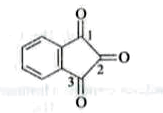Grignard addition to carbonyl compounds is specific case of nucleophillic addition reaction which leads to formation of all type of alcohols (1∘,2∘&3∘) .In this addition the strongly nucleophlic Grignard reagent uses its electron pair to form a bond with the C - atom of >C=O group, where one e− pair of group ,shifts out towards oxygen . It results in the formation of an intermediate species in which alkoxide ion associated with Mg2+ and . Now addition of an intermediate of this species to give alcohol.

A

B

C

D

Text Solution
The correct Answer is:C

Diol protects aldehyde since it is more reactive.
Grignard reagent reacts with keto carbon carbon since it does not react with (only one equalent is given)
|
Topper's Solved these Questions
Similar Questions
Knowledge Check
Cleavage of Grignard reagent results in the formation of
Acarbonium ionBcarbanionCfree radicalDcarbeneThe general order of reactivity of carbonyl compounds towards nucleophilic addition reaction is
AH2C=O>RCHO>ArCHO>R2C=O>Ar2C=OBArCHO>Ar2C=O>RCHO>R2C=O>H2C=OCAr2C=O>R2C=O>ArCHO>RCHO>H2C=ODH2C=O>R2C=O>Ar2C=O>RCHO>ArCHOWhich carbonyl group of the given compound is most reactive for nucleophilic addition reaction ?
 A1B2C3DAll have equal reactivity
A1B2C3DAll have equal reactivity
Nucleophilic Addition Reaction || Reaction with Grignard Reagent
View SolutionGive nucleophilic addition reaction of acetaldehyde with
Grignard's reagents
View SolutionNucleophilic addition of Grignard reagent cannot occur in
View SolutionThe reactivity of carbonyl compounds towards nucleophilic addition reaction gets affected by
View SolutionWhich carbonyl group of the given compound is most reactive for nucleophilic addition reaction?

View Solution
